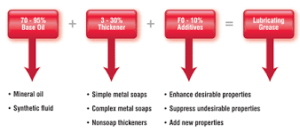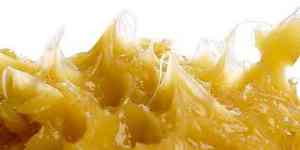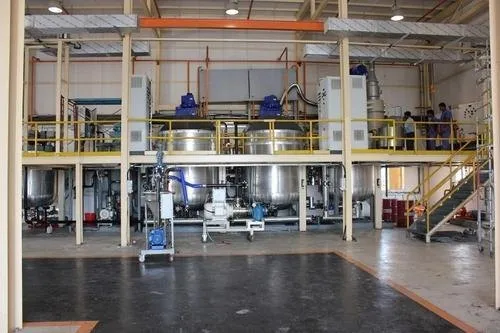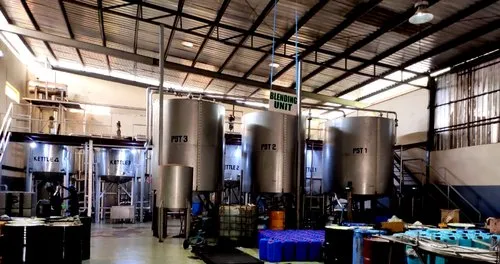Grease Manufacturing Plant Design By Sahraii Petro Manufacturers & Exporters By Enginners Who Are Exporting To World Wide .

After oils, grease accounts for the most consumption in the world (about four percent). It can be said that without the use of this lubricant, no country’s economic wheel will run.
The formulation, manufacturing, reactions and application of greases take a complete set of various technologies including vast parts of physics, chemistry and chemical engineering.
Grease Manufacturing Plant Designing is Our Specialty An We Have Other Plants Like Lube Oil Blending Plant , Waste Oil Recycling Plant
To fully understand this lubricant, very detailed investigations are needed.
Also Mini Oil Refinery Design Is Our Profession.
Simultaneously with the construction of new machines and equipment, which compared to the past have speed, hard working conditions, temperature changes and other advantages, it is necessary to prepare new lubricants for today’s machines. Therefore, a complete understanding of the structure and process of preparing new greases becomes doubly important.

Over the years and after gaining a lot of experience, a lot of knowledge about the structure of grease has been obtained. Recently, with the use of advanced tools such as electronic microscopes and by taking special films and using X-rays, many things have been determined about the structure of grease. With these achievements, it has been possible to study the structure of soaps and how to combine them with oil and the crystallization of soap in oil.
Grease structure
For Grease Manufacturing Plant Price Just Contact Us.
Grease is a solid or semi-solid gelatinous substance that consists of a lubricant (mineral or synthetic oils) and an inorganic or organic filler (thickener). This material is used where other low concentration lubricants (oils) cannot be used. Industrial gears, large bearings, plates and the like are among the applications of grease. Like oils, this substance is used to minimize friction between two parts. Among the most important advantages of using grease, we can mention the reduction of lubrication frequency, ease of use, prevention of hammer impact on parts during operation, and better adhesion.

Soap base
The types of grease are named by their soap base. During cooking, soapy fibers are formed inside the oil and give it a gelatinous state. These fibers are classified into several groups: short, long, Korean or beard fibers. Their length varies from one to one hundred microns in the string structure. In the type of spherical tissue, their diameter is measured from 0.012 to 0.8 microns. To study the structure of grease, electronic microscope, X-ray video and polarized light are used. The greater the ratio of the fiber length to its diameter, the better the consistency of the grease. Cooking grease requires long experience and special skills.
There are many grease fillers, but the most important of them are:
- – Calcium soap (cup, chassis greases)
- – Sodium soap (RBB, fiber or its brand Valvaline)
- – Lithium soap (Maltese, Mahan)
- – Inorganic soap (fireproof grease, Benton)
- – Aluminum soap.
Grease Manufacturing Plant Designing is Our Specialty.
For working in harsh conditions, materials with increased pressure resistance can be used.
Grease production steps
The properties of greases, especially soap-based greases, are as much dependent on the percentage composition and properties of their constituent chemicals as they are on how they are produced. These steps include the production of the hardener and mixing it with other grease-making materials. In general, grease is made in two continuous and discontinuous ways. The discontinuous method itself can be done in two different ways. In the first method, soap that is prepared separately is used, but in the other method, soap is produced simultaneously with the production of grease, inside the base oil.

Grease Manufacturing Plant For Sale So Contact Us.
Making soap:
This substance itself is obtained from cooking fats (fatty acids) and alkaline substances. Soap in many greases must be prepared in advance. For this purpose, raw materials are injected into the soap making machine called autoclave and put under pressure. Then stop this device completely
It is drained and put under pressure like pressure cookers. This device has a heating wall of hot oil and its cooking temperature is around 300 degrees Celsius. The autoclave also has a stirrer for complete mixing, which is used during cooking for complete uniformity of the ingredients. In this way, soap making continues with tests and sampling until the perfect result is obtained.
Making grease
After the soap is made, the ingredients are transferred to the grease cooking machine called “kettle” and then oil is added to it. This device works like an autoclave, except that it is not pressurized. During cooking, the soap inside the oil forms tiny crystals and creates a gelatinous mixture. The growth of crystals in oil is one of the most important and sensitive stages of cooking grease. If raw materials, especially low-quality base oil, are used, the structure of the formed crystals will be weakened, and when working under normal or harsh conditions, the soap will separate from the oil and the grease will lose its lubrication properties.

Crystals
The type and size of the crystals is the main factor in the structure of the grease. In general, they are classified into three groups of long, medium and short fibers. The thickness of these threads varies from 100 to 0.012 microns. The greater the ratio of the length of the strands to their diameter, the better consistency the grease will have. Grade: Grease is divided into 9 groups in terms of classification. In each floor, there is a distance of 30 units from the smallest to the largest value and 15 units between each group. The minimum value is 85 and the maximum value is 475. To determine the grade of grease, it is brought to a temperature of 25 degrees Celsius. Then, the permeability device, which has a standard cone, is dropped from a certain height using the natural force of gravity on the surface of the heated grease.
Discontinuous production
Grease with pre-prepared soap
In this method, the soap that is produced separately in another unit or bought ready is added to the desired base oil in the grease cooking pot. Under controlled conditions, the soap and oil mixture is heated and stirred until well homogenized. Then the mixture is cooled until the crystallization process and the formation of the stiffening network take place. Since the price of the hardener and thus the total cost of production is more expensive in this method, this method is used only for the production of special greases. These greases include synthetic greases that have precise chemistry or greases in which the base oil used is sensitive to water and steam produced in the saponification stage.

Continuous production of grease along with soap production
In general, in this method, the raw ingredients of soap react together in the environment of the base oil, and as a result, the soap is formed homogeneously inside the oil. Fatty acids or their glycerides or even their methyl esters are one of these raw materials that are generally soluble in base oil. Alkaline compounds are another part of the raw materials, which are added to the base oil in the form of aqueous solutions or suspended mixtures. In this type of continuous production, the following ten steps are performed:
Step 1- Mixing or dissolving fatty acids in two-thirds or one-third of the base oil at a temperature lower than 90 degrees Celsius.
Step 2- Adding the desired alkaline hydroxide as a solution or a mixture suspended in water to the mixture obtained from step 1.
Step 3- Heating the mixture obtained from step 2 to a temperature of 150 degrees Celsius or under pressure to a temperature of 180 to 200 degrees Celsius depending on the type of reactor (of course these temperatures also depend on the type of grease)
Step 4 – Dehydrating the soap by reducing the pressure and heating it to 200 degrees Celsius.
Step 5 – Crystallizing and simultaneously adding more base oil while cooling the mixture to 130 degrees Celsius
Step 6- Adding additives at temperatures lower than 80 degrees Celsius
Step 7 – Primary filtering and homogenization of grease using mixers or other equipment
Step 8- Adjusting the stiffness and fluidity of the grease to the desired level
Step 9 – Final filtering and deaeration using vacuum
Step 10 – Packing and wrapping
Stages 3 and 4 are the stages of cooking grease. During cooking, the soap forms tiny crystals inside the oil and makes the mixture gelatinous. The growth of crystals in oil is one of the most important and sensitive stages of grease production, which has the greatest impact on the quality of grease.
If raw materials, especially low-quality oil, are used, the structure of the resulting crystals will be weakened. The weakening of the structure of the hardener crystals causes the oil to separate from the hardener (soap) during operation in normal or hard conditions, and the grease loses its lubrication properties.
They use filtering to separate the impurities that may have entered the grease together with the raw materials or were created during the production process. By simultaneously applying filtration and vacuum, excess air bubbles that adversely affect the appearance of the grease can be removed.
important lubricants
One of the most important lubricants used in most industries is grease. Therefore, we decided to publish an article on the grease production line and how it is produced to help prepare the briefing plan and student research. I hope you will stay with Iran Sanat until the end of the article.
After oils, this substance accounts for the most consumption in the world (about four percent). It can be said that without the use of this lubricant, no country’s economic wheel will run.
The formulation & Process
The formulation, manufacturing, reactions and application of greases take a complete set of various technologies including vast parts of physics, chemistry and chemical engineering. To fully understand this lubricant, very detailed investigations are needed. Simultaneously with the construction of new machines and equipment, which compared to the past have speed, hard working conditions, temperature changes and other advantages, it is necessary to prepare new lubricants for today’s machines. Therefore, a complete understanding of the structure and process of preparing new greases becomes doubly important.

Over the years and after gaining a lot of experience, a lot of knowledge about the structure of grease has been obtained. Recently, with the use of advanced tools such as electronic microscopes and by taking special films and using X-rays, many things have been determined about the structure of grease. With these achievements, it has been possible to study the structure of soaps and how to combine them with oil and the crystallization of soap in oil.
Definition of grace
So far, several definitions have been provided for grease, the most important of which can be summarized as follows:
- 1) Grease is a solid or semi-solid material that consists of petroleum derivatives and soap (combined with several soaps) along with fillers, and can be used for special purposes.
- 2) Grease is a solid or semi-solid material that is made from the combination of a filler inside the oil, other materials (to increase properties) may also be used in it.
- 3) Grease is a lubricating substance that uses fillers in its structure so that it can stick to moving parts and not separate from the part under the force of gravity or operating pressure.
Grease structure
Grease is a solid or semi-solid gelatinous substance that consists of a lubricant (mineral or synthetic oils) and an inorganic or organic filler (thickener). This material is used where other low concentration lubricants (oils) cannot be used. Industrial gears, large bearings, plates and the like are among the applications of grease. Like oils, this substance is used to minimize friction between two parts. Among the most important advantages of using grease, we can mention the reduction of lubrication frequency, ease of use, prevention of hammer impact on parts during operation, and better adhesion.
Soap base
The types of grease are named by their soap base. During cooking, soapy fibers are formed inside the oil and give it a gelatinous state. These fibers are classified into several groups: short, long, Korean or beard fibers. Their length varies from one to one hundred microns in the string structure. In the type of spherical tissue, their diameter is measured from 0.012 to 0.8 microns. To study the structure of grease, electronic microscope, X-ray video and polarized light are used. The greater the ratio of the fiber length to its diameter, the better the consistency of the grease. Cooking grease requires long experience and special skills.

There are many grease fillers, but the most important of them are:
- :: Calcium soap (cup greases, chassis)
- :: Sodium soap (RBB, fiber or its brand Valvaline)
- :: Lithium soap (Maltese, Mahan)
- :: inorganic soap (refractory grease, Benton)
- :: Aluminum soap
For working in harsh conditions, materials with increased pressure resistance can be used.
Grease production method
The properties of greases, especially soap-based greases, are as much dependent on the percentage composition and properties of their constituent chemicals as they are on their production processes. These steps include the production of the stiffening material and mixing it with other grease-making materials. In general, the production of grease is done in two continuous and discontinuous ways. The discontinuous method itself can be done in two different ways. In the first method, soap that is prepared separately is used, but in the other method, soap is produced simultaneously with the production of grease, inside the base oil.
Making soap: This substance is also obtained from cooking fats (fatty acids) and alkaline substances. Soap in many greases must be prepared in advance. For this purpose, raw materials are injected into the soap making machine called autoclave and put under pressure. Then this device is completely closed and pressurized like pressure cookers. This device has a heating wall of hot oil and its cooking temperature is around 300 degrees Celsius. The autoclave also has a stirrer for complete mixing, which is used during cooking for complete uniformity of the ingredients. In this way, soap making continues with tests and sampling until the perfect result is obtained.

Grease making: After soap making is finished, the ingredients are transferred into the grease cooking machine called “kettle” and then oil is added to it. This device works like an autoclave, except that it is not pressurized. During cooking, the soap inside the oil forms tiny crystals and creates a gelatinous mixture. The growth of crystals in oil is one of the most important and sensitive stages of cooking grease. If from raw materials to and
Especially if low-quality base oil is used, the structure of the resulting crystals will be weakened, and when working under normal or severe conditions, the soap will separate from the oil and the grease will lose its lubrication properties.
Crystals: The type and size of crystals is the main factor in the structure of the grease. In general, they are classified into three groups of long, medium and short fibers. The thickness of these threads varies from 100 to 0.012 microns. The greater the ratio of the length of the strands to their diameter, the better consistency the grease will have. Grade: Grease is divided into 9 groups in terms of classification. In each floor, there is a distance of 30 units from the smallest to the largest value and 15 units between each group. The minimum value is 85 and the maximum value is 475. To determine the grade of grease, it is brought to a temperature of 25 degrees Celsius. Then, the permeability device, which has a standard cone, is dropped from a certain height using the natural force of gravity on the surface of the heated grease.

Continuous production of grease with soap from pre-prepared
In this method, soap that is produced separately in another unit or bought ready-made is added to the desired base oil in the grease cooking pot. Under controlled conditions, the mixture of soap and oil is heated and stirred until it is well homogenized. Then the mixture is cooled so that the crystallization process and the formation of the stiffening network take place. Since the price of the hardener and as a result the total cost of production is more expensive in this method, this method is used only for the production of special greases. These greases include synthetic greases that have precise chemistry or greases in which the base oil used is sensitive to water and steam produced in the saponification stage.
Grease production line
Continuous production of grease along with soap production
In general, in this method, the primary ingredients of soap react together in the environment of base oil, and as a result, soap is formed homogeneously inside the oil. Fatty acids or their glycerides or even their methyl esters are one of these raw materials that are generally soluble in base oil. Alkaline compounds are another part of the raw materials, which are added to the base oil in the form of aqueous solutions or suspended mixtures. In this type of continuous production, the following ten steps are performed:
Step 1 – Mixing or dissolving fatty acids in two-thirds or one-third of the base oil at a temperature below 90 degrees Celsius.
Step 2- Adding the desired alkaline hydroxide as a solution or a mixture suspended in water to the mixture obtained from step 1.
Step 3- Heating the mixture obtained from step 2 to a temperature of 150 degrees centigrade or under pressure to a temperature of 180 to 200 degrees centigrade depending on the type of reactor (of course these temperatures also depend on the type of grease)
Step 4 – Dehydrating the soap by reducing the pressure and heating it to 200 degrees Celsius.
Step 5- Crystallizing and simultaneously adding more base oil while cooling the mixture to 130 degrees Celsius.
Step 6- Adding additives at temperatures lower than 80 degrees Celsius
Step 7- Primary filtering and homogenization of grease using mixers or other equipment.
Step 8- Adjusting the stiffness and flowability of the grease to the desired level
Step 9 – Final filtering and aeration using vacuum
Step 10- Packing and encapsulating
Stages 3 and 4 are the stages of cooking grease. During cooking, the soap forms tiny crystals inside the oil and makes the mixture gelatinous. The growth of crystals in oil is one of the most important and sensitive stages of grease production, which has the greatest impact on the quality of grease.
If raw materials, especially low-quality oil, are used, the structure of the resulting crystals will be weakened. The weakening of the structure of the hardener crystals causes the oil to separate from the hardener (soap) during operation in normal or hard conditions, and the grease loses its lubricating properties.
Filtering is used to separate the impurities that may have entered the grease together with the raw materials or were created during the production process. By using filtering and vacuum at the same time, it is possible to eliminate the excess air bubbles that have a bad effect on the appearance of the grease.
Grease production line
Application and importance of using grease
Many driving forces cannot be used without the use of grease. Although grease is less consumed than other lubricants, its place cannot be replaced by other materials. Its main practical advantages can be summarized as follows:
1) The number of lubrication times of grease is less compared to oil, which reduces the cost of maintenance and repairs. This is an advantage for applications where access to machinery is difficult, such as motors mounted on roofs, drive lines, inaccessible bearings, and the like.
2) Grease acts as a sealing barrier for the entry of dust or the exit of some materials from machines.
3) If the machinery is properly greased, its parts will not fall apart and separate due to operation. Grease does not leak, and for this reason, it is important in terms of workshop maintenance and less pollution.
4) The sealing of parts and the use of felt bowls and the like are done at a lower cost. The oil sealing felt bowl has more friction with the parts and allocates more force for this purpose.
5) If the grease is not even visible in the part, it will work longer compared to the lubricating oil. Some greases are made in such a way that they are sealed in the part and its lifespan is the same as the part
6) When the part is not used and the lubricant is removed, the possibility of rusting of the part that used grease is much less compared to oil.
7) Some greases have solved the problem of lubrication in the vicinity of water – compared to oil.
8) Some greases create less friction when starting the device.
9) Grease can reduce the vibration and noise of some devices such as large gears. Grease is like a soft layer between parts and reduces noise and vibration and smooth operation of devices, especially large gears.
10) Grease works better in working under high pressure, high temperature, harsh operating conditions, low speed, continuous shocks and bearings whose axial rotation is frequently reversed.
11) where the machines have severe corrosion and wear, grease is better used.
12) Most greases are widely used in variable temperatures, but the working temperature of most oils is fixed.
13) In the design of machine bushings and bearings, grease has a more effective role than oil.
Comparing the use of grease and oil
1) Grease does not cool the devices during operation.
2) Oils easily penetrate the channels of devices, but this is a weakness for greases.
3) Oils have more advantages in terms of storage.
Grease classification (grade)
Grease is classified into 9 groups (grades). This division is based on the degree of relative permeability of grease consistency.




